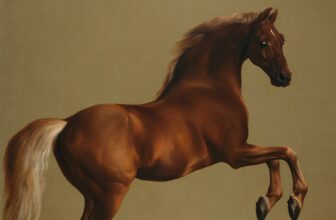
The Story and Meaning Behind Edgar Degas The Ballet Class
In the softly lit, dust-moted atmosphere of a Parisian studio, a group of young ballerinas waits, listens, stretches, and shifts. Their limbs are poised with grace, their postures infused with tension, boredom, and expectancy. At the helm, the elderly ballet master, bent with age yet commanding, offers correction and discipline. This is not a performance. This is practice. This is work. This is the world Edgar Degas captured with striking intimacy in his iconic painting “The Ballet Class” (La Classe de Danse), a cornerstone of Impressionist art and a window into a vanished Paris.
Painted between 1871 and 1874, The Ballet Class is more than just an image of dancers. It is a profound study of movement, structure, gender, and society, wrapped in a deceptively quiet scene. To understand the painting is to step into the world of 19th-century French ballet, filtered through the brilliant and often unflinching eyes of one of art’s great observers.
At its surface, The Ballet Class depicts exactly what its title suggests, a group of ballerinas during a rehearsal or instructional period, likely within the opulent Paris Opéra. The painting was commissioned by Jean-Baptiste Faure, a famous baritone and patron of the arts, which may explain its somewhat refined and harmonious atmosphere. It was completed not long after the Paris Commune, a time of intense political and cultural upheaval in France, and the painting seems to offer a tranquil, almost escapist glimpse into bourgeois life.
In the composition, we see Jules Perrot, a renowned ballet master and former dancer, at the center of the action, or rather, the inaction. He stands near the right edge, cane in hand, gesturing toward the dancers. The ballerinas around him are in various states of movement and repose. One ties a ribbon, another adjusts her position on pointe, a few appear lost in thought or quietly waiting their turn. The painting captures not the performance itself, but the preparation, the real labor, the behind-the-scenes reality of dance.
What Is Happening in “The Ballet Class”?
Degas shows us a moment of transition. The dancers are not frozen in classical poses, nor are they dramatically leaping or twirling. Instead, we find a scene imbued with mundane, everyday reality, stretching muscles, waiting for instruction, adjusting posture. There’s a powerful intimacy in how Degas renders these figures. It feels like we, the viewers, are intruding on a private, unperformed moment.
There’s no central action in the painting. It’s as if Degas purposefully avoids narrative in favor of observation. Each figure is caught mid-motion or mid-thought, contributing to a mood that is at once dynamic and still. This reflects Degas’ lifelong fascination with capturing fleeting moments, a hallmark of Impressionist technique, yet his work diverged from his peers in that he meticulously structured his compositions, often working from drawings and studies, rather than plein-air spontaneity.
Also of note is the spatial arrangement. The composition is asymmetrical, with the action mostly on one side. There’s an almost photographic quality to the way figures are cropped or partially obscured, as though Degas framed this scene with a lens, not a brush. This innovation helps modern viewers feel a sense of realism that was revolutionary for its time.
Symbolism and Interpretation
1. The Illusion of Grace and the Reality of Labor
One of the central themes in The Ballet Class is the contrast between the elegance of ballet and the rigorous discipline it demands. Degas deliberately shatters the romantic illusion of dance as pure beauty. Instead, he places emphasis on the sweat, fatigue, and effort that go into creating that beauty. The dancers are not glamorized; some are slouching, others resting, one even appears bored. This tension between artifice and authenticity is a key interpretive thread.
2. The Male Gaze and Control
A more critical interpretation considers the role of Jules Perrot, the only male figure, and his positioning. He does not interact gently with the dancers. Instead, his body language, his cane, his assertive posture, suggests authority. Scholars have debated how Degas portrays the patriarchal structure of the ballet world, where young women are shaped and judged by older men, not just artistically but often socially and financially. Many dancers at the time were from lower-class backgrounds and depended on wealthy patrons, blurring lines between performance, objectification, and survival.
Degas himself was often accused of viewing his subjects with a detached or even exploitative eye. He frequented dance schools and opera houses not just to sketch but to observe. Was he celebrating the strength and form of these dancers, or was he revealing their commodification? The answer may lie in the painting’s ambiguity.
3. A Microcosm of Bourgeois Society
The ballet class becomes a metaphor for Parisian society itself, with its unspoken hierarchies, silent power dynamics, and strict codes of behavior. The painting is populated by young girls with identical white tutus, suggesting both conformity and innocence. But the presence of scattered objects, mismatched gestures, and individualized expressions tells another story, a yearning for individuality in a world that demands sameness.
4. Temporality and the Flow of Time
The painting also plays with the notion of temporality. There is no climax, no resolution, just a flow of moments suspended in time. Degas seems obsessed with catching the ephemeral, the seconds between seconds, much like a snapshot. He captures movement in stillness, a paradox that defines much of his work.
What Type of Art Is The Ballet Class?
While Degas is often associated with Impressionism, and this painting is frequently categorized as such, his style does not entirely conform to the movement’s tenets. Unlike Monet or Renoir, Degas rarely painted outdoors and had little interest in capturing transient effects of natural light.
Instead, Degas was a realist at heart, with a rigorous classical training and a strong interest in the human figure. The Ballet Class embodies a blend of Impressionism and Realism. It shares with Impressionism a focus on everyday subjects, unusual angles, and the play of light, but diverges in its structured composition and intellectual detachment.
His technical approach also varied. Degas often used oil paints, pastels, and even mixed media, experimenting with texture and layering. In The Ballet Class, he uses oil on canvas, allowing for delicate brushwork and a rich tonal palette. The subtle grays, pinks, and whites create a quiet mood, devoid of dramatic contrasts but full of psychological depth.
Where Is The Ballet Class Painting Today?
Today, The Ballet Class by Edgar Degas resides in the Musée d’Orsay in Paris, France, one of the world’s leading museums for 19th-century art. The Musée d’Orsay, located on the Left Bank of the Seine in a former Beaux-Arts railway station, houses the largest collection of Impressionist and post-Impressionist masterpieces in the world.
Degas’ painting is one of its highlights, drawing thousands of visitors who come to see the subtle beauty and powerful realism that have made The Ballet Class one of his most beloved and analyzed works.
Degas’ Lifelong Obsession with Ballet
The Ballet Class was not a one-off experiment. It was part of a lifelong series of ballet-themed works that became almost synonymous with Degas’ career. From pastels and sketches to oil paintings and sculpture, Degas returned again and again to dancers, not because of a romanticized notion of their art, but because he saw in them the perfect vehicle for exploring human movement, routine, tension, and endurance.
To Degas, ballet dancers were not ethereal beings but workers, subject to the same limitations and demands as any laborer. His works demystify the stage, pulling back the curtain on what the audience never sees. This unsentimental lens is perhaps what gives his paintings their enduring strength.
The Eternal Rehearsal
The Ballet Class by Edgar Degas is more than a painting; it is a meditation. A meditation on discipline, on fleeting beauty, on social structures, on human fragility and resilience. Through the eyes of Degas, the ballet studio becomes a theatre not of drama but of truth. Every slumped shoulder, every off-balance foot, every indifferent glance tells us something vital about the world these girls inhabit, and the world beyond the frame.
In a time when art often celebrated grandeur, Degas turned to the quiet, overlooked moments. He taught us to look harder, to see deeper. In The Ballet Class, we don’t just watch dancers, we listen to their silence, feel their fatigue, witness their discipline, and recognize their humanity.
This is why, nearly 150 years later, the painting continues to resonate, not only as a masterpiece of technique, but as a deeply human story still unfolding in every studio, on every stage, in every quiet preparation for performance.




